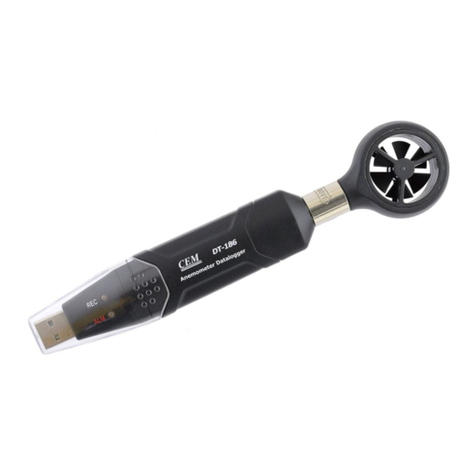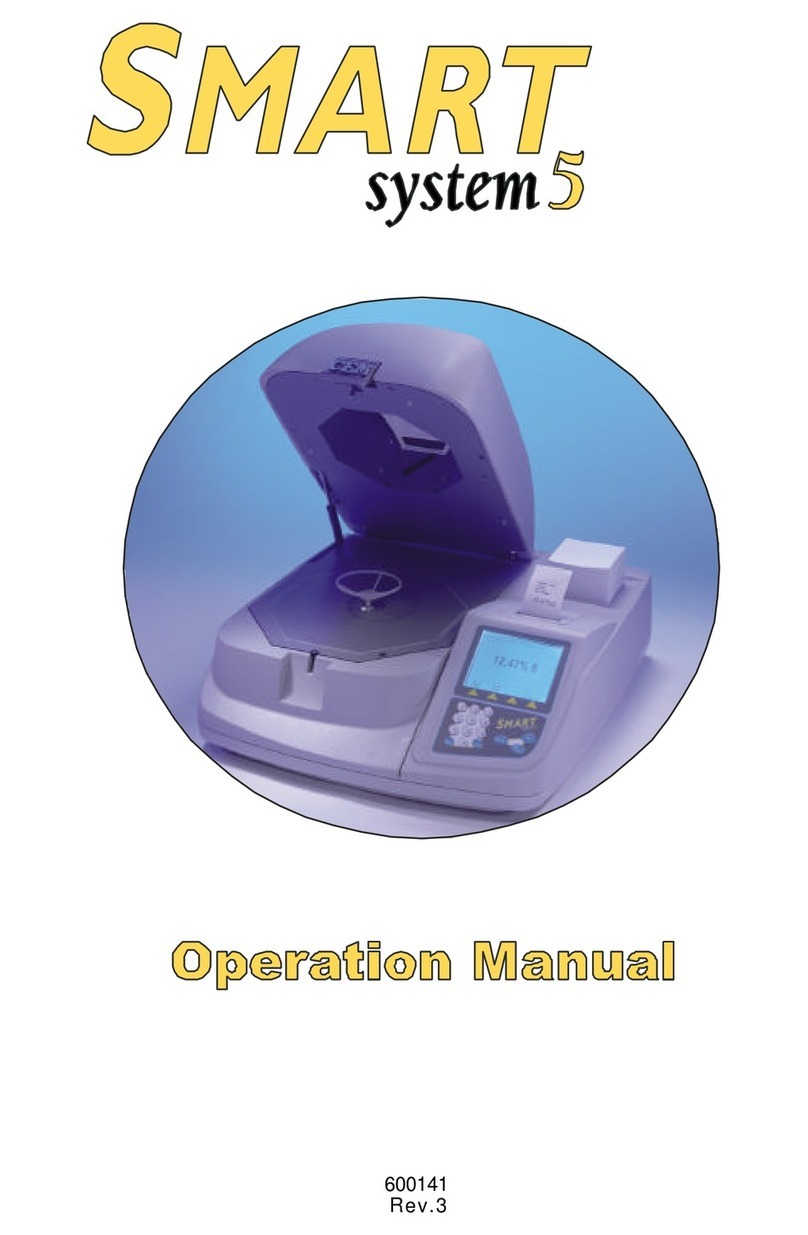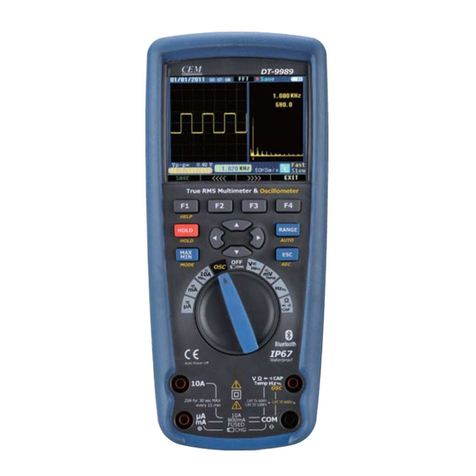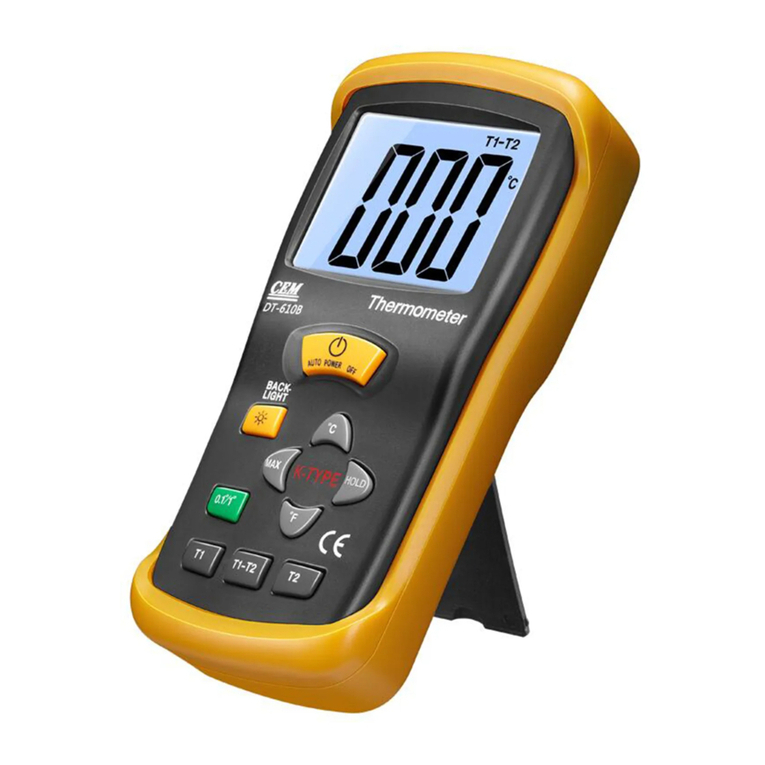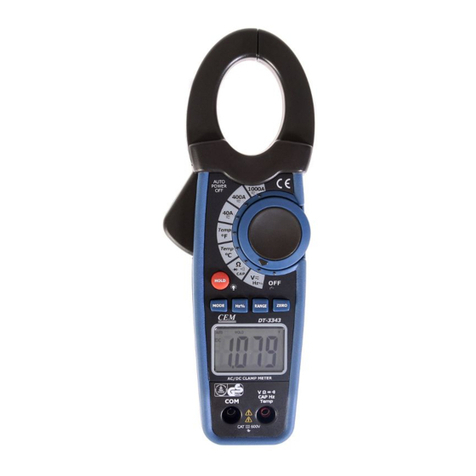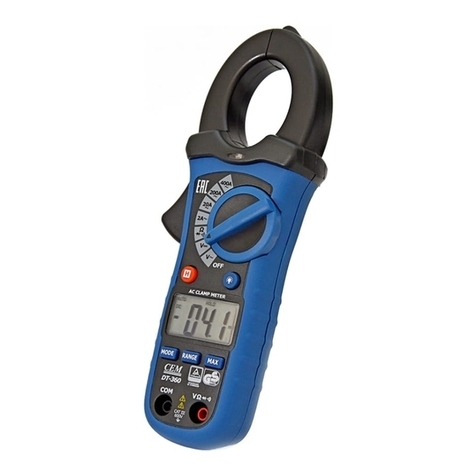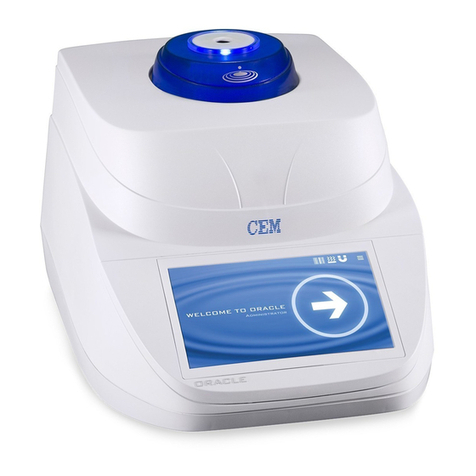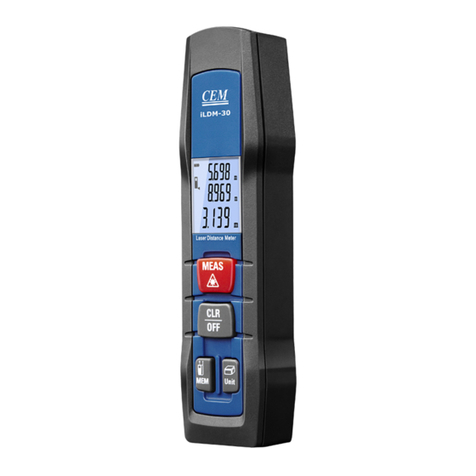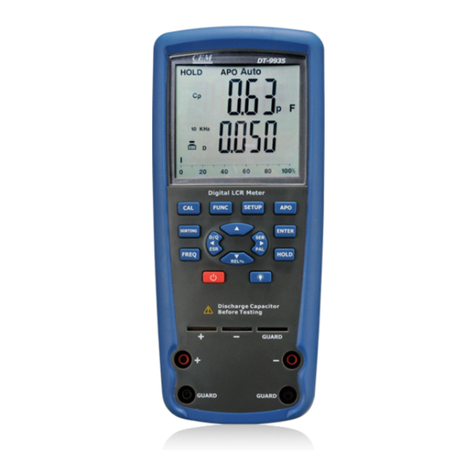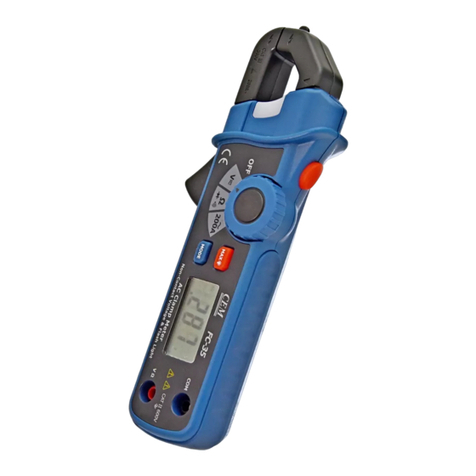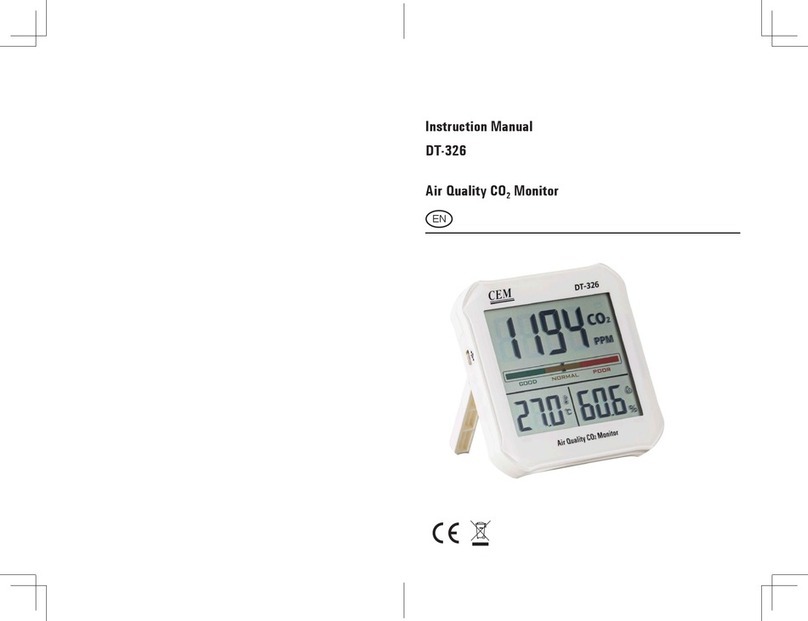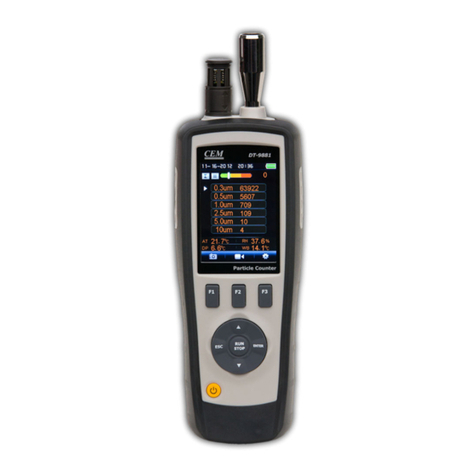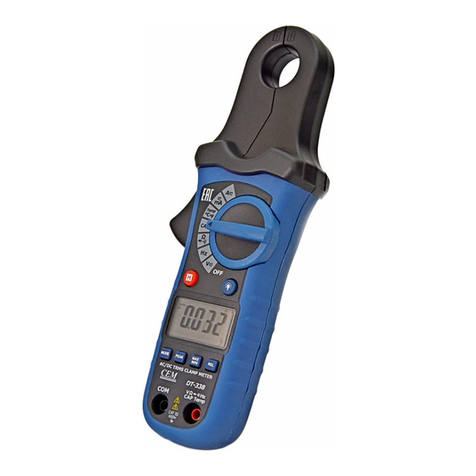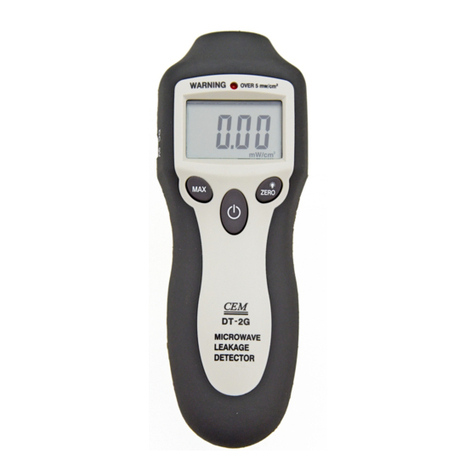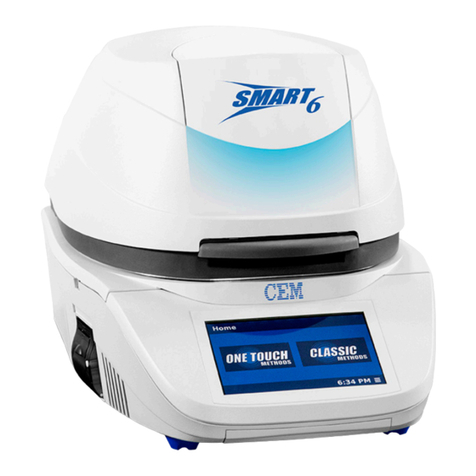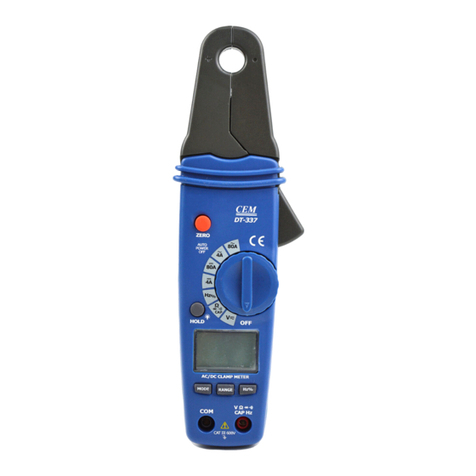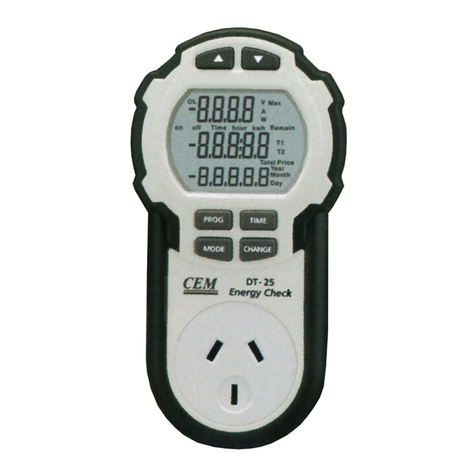
Safety
International Safety Symbols
This symbol, adjacent to another symbol or terminal, indicates the user must refer
to the manual for further information.
This symbol, adjacent to a terminal, indicates that, under normal use, hazardous
voltages may be present
Double insulation
SAFETY NOTES
•Do not exceed the maximum allowable input range of any function.
•Do not apply voltage to meter when resistance function is selected.
•Set the function switch OFF when the meter is not in use.
•Remove the battery if meter is to be stored for longer than 60 days.
WARNINGS
•Set function switch to the appropriate position before measuring.
•When measuring volts do not switch to current/resistance modes.
•Do not measure current on a circuit whose voltage exceeds 600V.
•When changing ranges always disconnect the test leads from the circuit under test.
•Changes or modifications to this unit not expressly approved by the party
responsible for compliance could void the user's authority to operate the
equipment.
Note: This equipment has been tested and found to comply with the limits for a
Class B digital device, pursuant to Part 15 of the FCC Rules. These limits are
designed to provide
reasonable protection against harmful interference in a residential installation.
This equipment generates, uses and can radiate radio frequency energy and, if
not installed and used in
accordance with the instructions, may cause harmful interference to radio
communications. However, there is no guarantee that interference will not occur in
a particular installation. If this equipment does cause harmful interference to redio
or television reception, which can be determined by turning the equipment off and
on, the user is encouraged to try to correct
the interference by one or more of the following measures:
Reorient or relocate the receiving antenna
Increase the separation between the equipment and receiver
Connect the equipment into an outlet on a circuit different from that to which the
receiver is connected
Consult the dealer or an experienced radio/TV technician for help.
The device must not be co-located or operating in conjunction with any other
antenna or transmitter.












